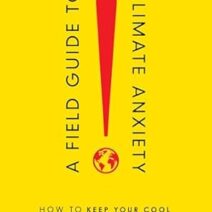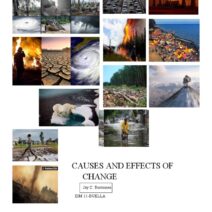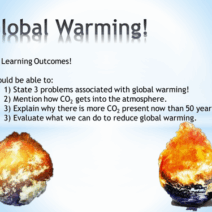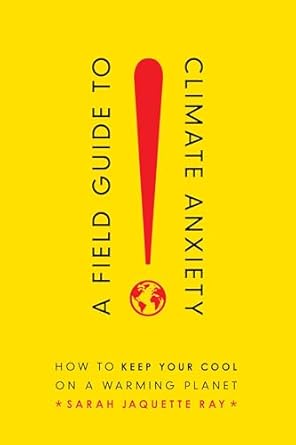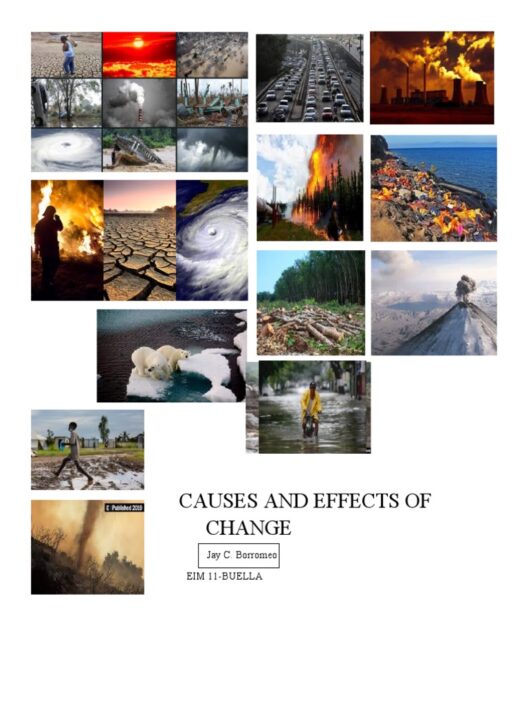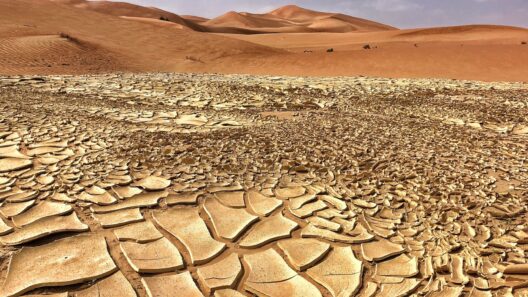Climate anxiety is fast becoming a ubiquitous phenomenon, a relentless undercurrent in the collective psyche of our age. It stems not simply from an occasional article or distressing news segment, but rather from a profound, pervasive malaise that seeps into our everyday lives. How does one remain sane and grounded amidst the cacophony of alarming information about our warming planet? The concept articulated in “A Field Guide to Climate Anxiety: How to Keep Your Cool on a Warming Planet” provides a pathway through the disarray of emotions, anxieties, and overwhelming facts.
At the outset, it is essential to acknowledge the insidious allure of climate anxiety. This emotional state encapsulates more than just fear for our planet’s future; it is a profound cognitive friction and an existential concern that resonates deeply with the human condition. The reality that future generations may inherit an increasingly inhospitable Earth evokes an innate desire for preservation, yet this same realization fosters feelings of helplessness and despair. Hence, individuals frequently oscillate between the desire to effect change and the grim awareness of the mountain of obstacles that stand in the way.
To further explore the reasons behind this anxiety, one must delve into the intrinsic human affinity for nature and stability. As inhabitants of this planet, we have evolved alongside its rhythms, seasons, and ecosystems. The sudden deviation from these natural patterns—whether through increasingly erratic weather patterns, devastating floods, or unrelenting heatwaves—creates a discord that triggers our psychological instincts for survival. It is precisely this nostalgia for a harmonious relationship with the environment that fuels our anxieties about climate change.
The book offers robust strategies on how to navigate this labyrinth of feelings. One primary approach is embracing the process of education. Knowledge is powerful, equipping individuals with the tools necessary to comprehend the complexities of climate science. By understanding the mechanisms behind climate change, its manifestations, and potential solutions, individuals can transform their feelings of helplessness into actionable insights. This shift from ignorance to knowledge not only cultivates resilience but also armors one against misinformation and fatalistic narratives.
Moreover, it’s imperative to cultivate emotional intelligence as part of this journey. Recognizing and confronting one’s emotional responses can pave the way for personal growth. Climate anxiety often signals an urgent need for a moral reckoning, prompting individuals to evaluate their own lifestyle choices and their impacts on the environment. Rather than suppressing this anxiety, embracing it as a catalyst for positive change can lead to constructive dialogues about climate action. This personal introspection enhances connections with like-minded individuals and empowers communities to advocate for broader systemic change.
Furthermore, fostering a sense of agency is crucial for alleviating anxiety. When it becomes apparent that collective action is paramount, individuals can better sense their role within the larger framework of environmental stewardship. This empowerment can manifest through various means—advocacy, volunteering, or even participating in local sustainability initiatives. Involvement in such activities dispels the isolation often associated with climate anxiety and reinforces the notion that every small action contributes to a significant cumulative effect.
However, it is equally important to strike a balance between activism and self-care. Engaging with climate issues can be emotionally taxing; thus, one must not only fight for ecological causes but also honor personal well-being. Mindfulness practices, such as meditation and nature immersion, allow individuals to recharge and gain perspective, countering the overwhelming despair that climate change can evoke. This restorative practice promotes a holistic approach to coping, fostering resilience in the face of adversity, rather than perpetuating a cycle of burnout.
Additionally, embracing a future-oriented mindset can also serve as a buffer against climate anxiety. Fostering hope is not mere wishful thinking; it involves cultivating realistic optimism grounded in actionable steps. This includes supporting innovative technologies like renewable energy solutions, advocating for policy changes, and investing in green initiatives. Such proactive stances reinforce the belief that positive transformation is achievable, running contrary to the fatalistic narratives that often swirl around climate discourse.
Yet, this journey is not devoid of challenges. The impediments to engaging effectively with climate change issues are manifold. Societal pressures, entrenched mental models, and economic dependencies can create a veil of inertia that is difficult to pierce. Recognizing these barriers is an essential step in dismantling them, allowing individuals to proactively facilitate dialogue that challenges the status quo. This cultural shift requires collective efforts, encouraging more individuals to confront the stark realities of climate issues rather than retreating into complacency.
In conclusion, grappling with climate anxiety is an intricate and multifaceted process. “A Field Guide to Climate Anxiety: How to Keep Your Cool on a Warming Planet” serves not only as a compass for navigating this treacherous emotional terrain but also as a clarion call to recognize that we need not face these challenges in isolation. Through education, emotional intelligence, collective agency, mindfulness, and hope, individuals can foster resilience amid uncertainty. As stewards of this planet, embracing responsibility while maintaining balanced self-care is not merely an ideal; it is imperative for the conscientious citizen in a warming world. In navigating our emotional landscapes, we may ultimately uncover pathways not just for personal calm but for global change.
